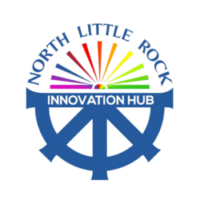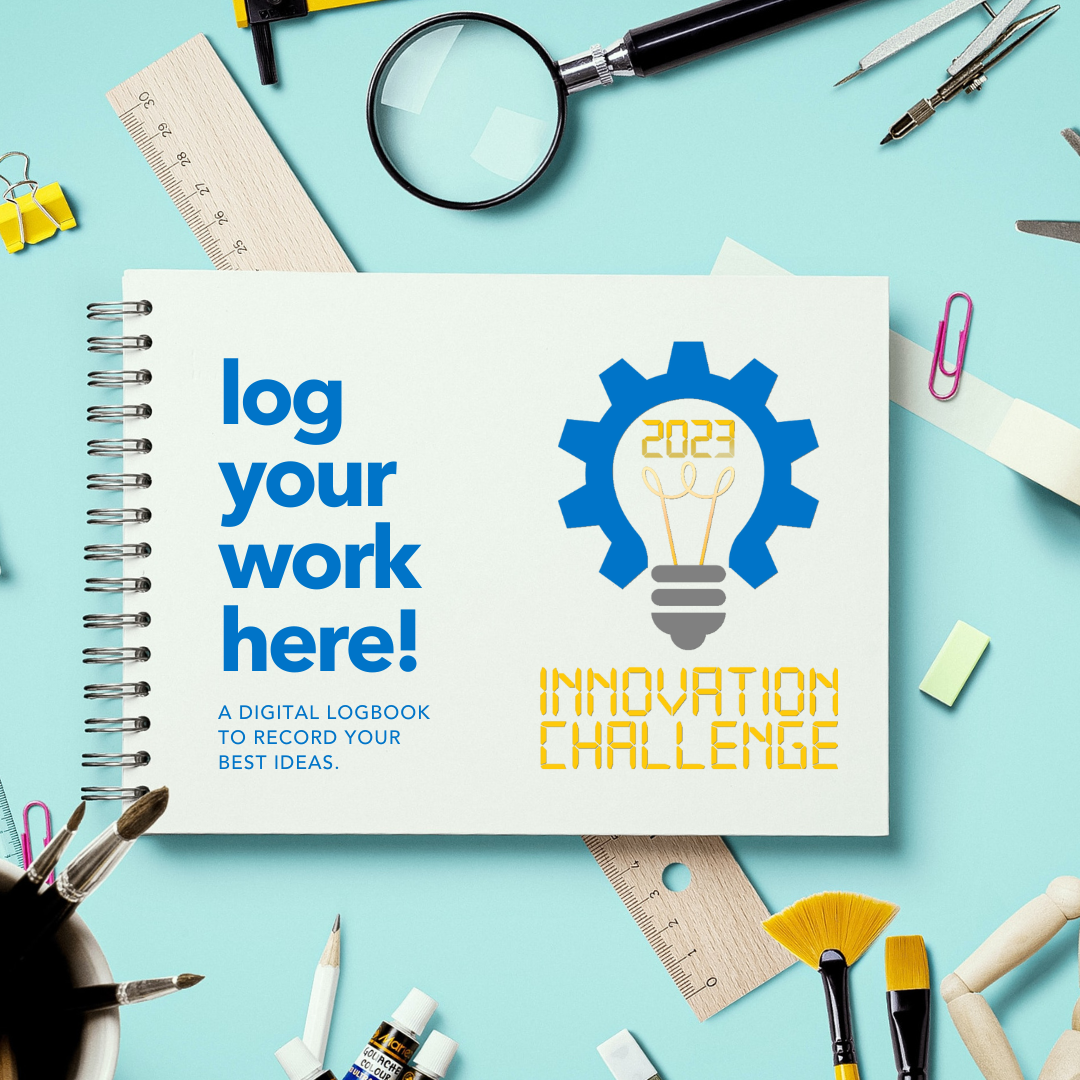
Congratulations to the 2023 Innovation Challenge Winners!


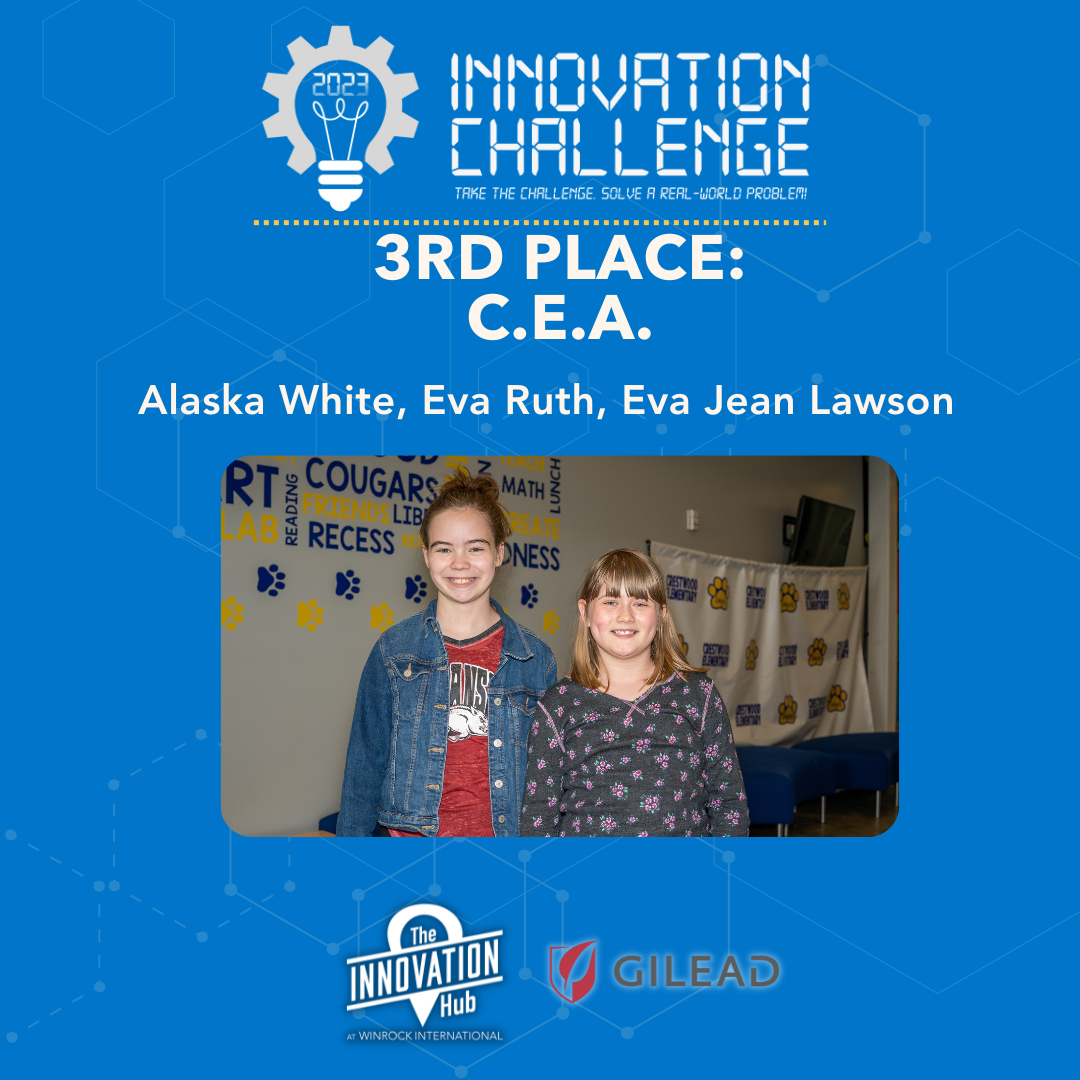
How the Innovation Challenge works!
Step 1: Think about the problems you encounter regularly.
Step 2: Brainstorm potential solutions for the problem.
Step 3: Get feedback for your idea.
Step 4: Develop your solution & share it with the world!
- February 3, 2023 – Submit the enrollment form
- February 24, 2023 – Mid Point Check In
- March 17, 2023 – Submission deadline for completed projects
- April 6, 2023 – Finalists announced
- April 13-20 – Virtual Finalists Pitch Competition
- April 26 – Winners Announced
- Environment & Climate Change
- Related to the natural world, as a whole or in a specific area and/or related to climate patterns changed by too much CO2, from fossil fuels, in the atmosphere.
- Ecology, Agriculture, & Biodiversity
- Related to the relationship between living organisms and their environment, or to the practice of preparing and using plants and/or livestock, or to the variety of plants and species present in an ecosystem
- Technology
- Related to scientific techniques, skills, and devices used for creating goods or services.
- Social Justice
- Related to justice in terms of the distribution of wealth, opportunities, and privileges within a society.
- Health & Wellness
- Related to the state of complete physical, mental, and social well-being. Wellness is an active process through which people become aware of, and make choices toward, a more successful existence.
Scoring & Winning: A panel of judges will review the submitted projects and score them according to the scoring criteria below.
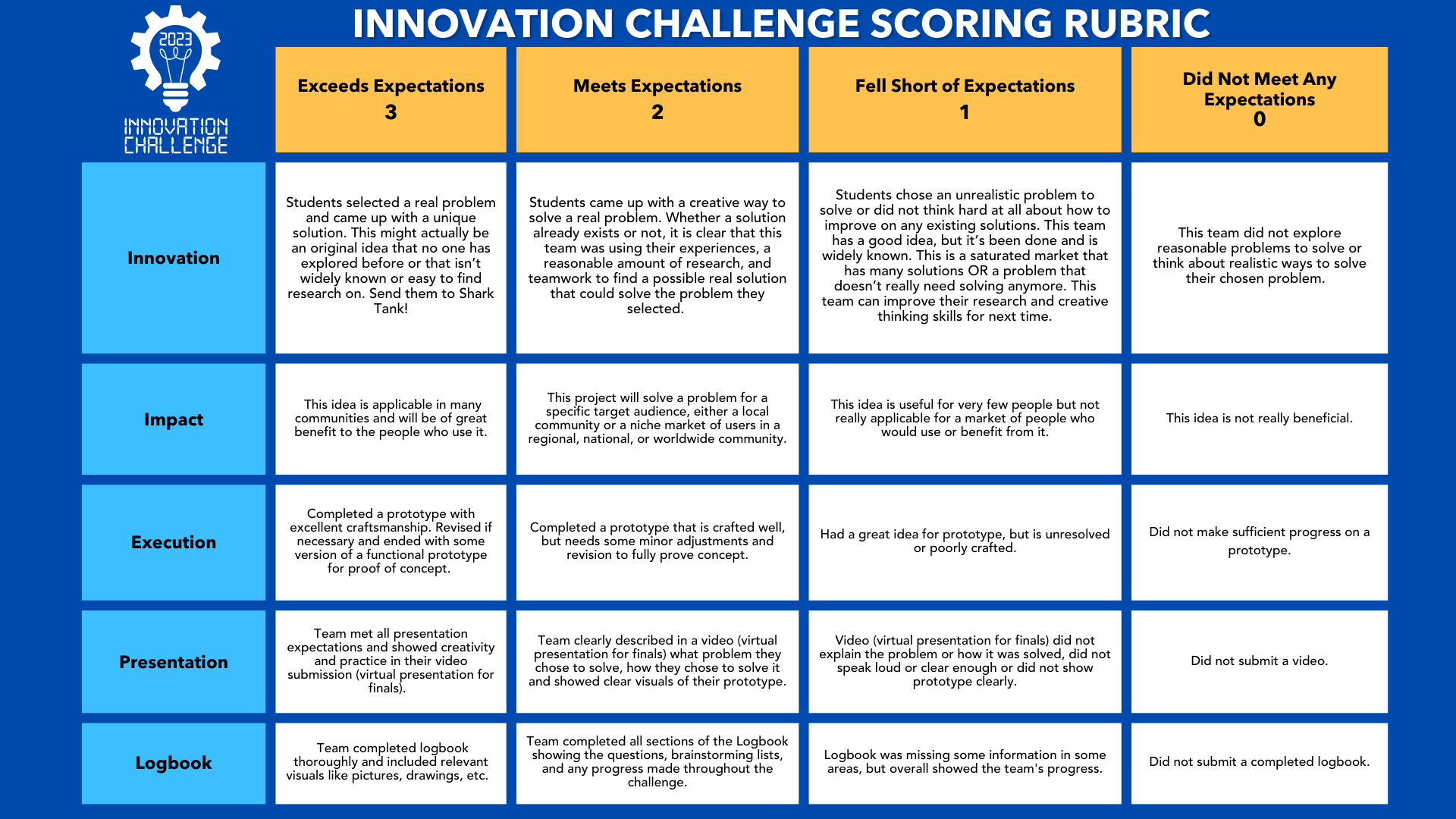
Use the Engineering Design Process to guide your project.
Follow this engineering process to research a problem, build and test your solution, and then share it with the world!
Students will learn about the Engineering Design Process and use it to define a problem, think of a solution, create a prototype using new skills, and finally submit a slideshow presentation for their idea. Students will use the logbook template to record all of their ideas, questions, research, and results of the project. It is digital and easy to collaborate with team members.
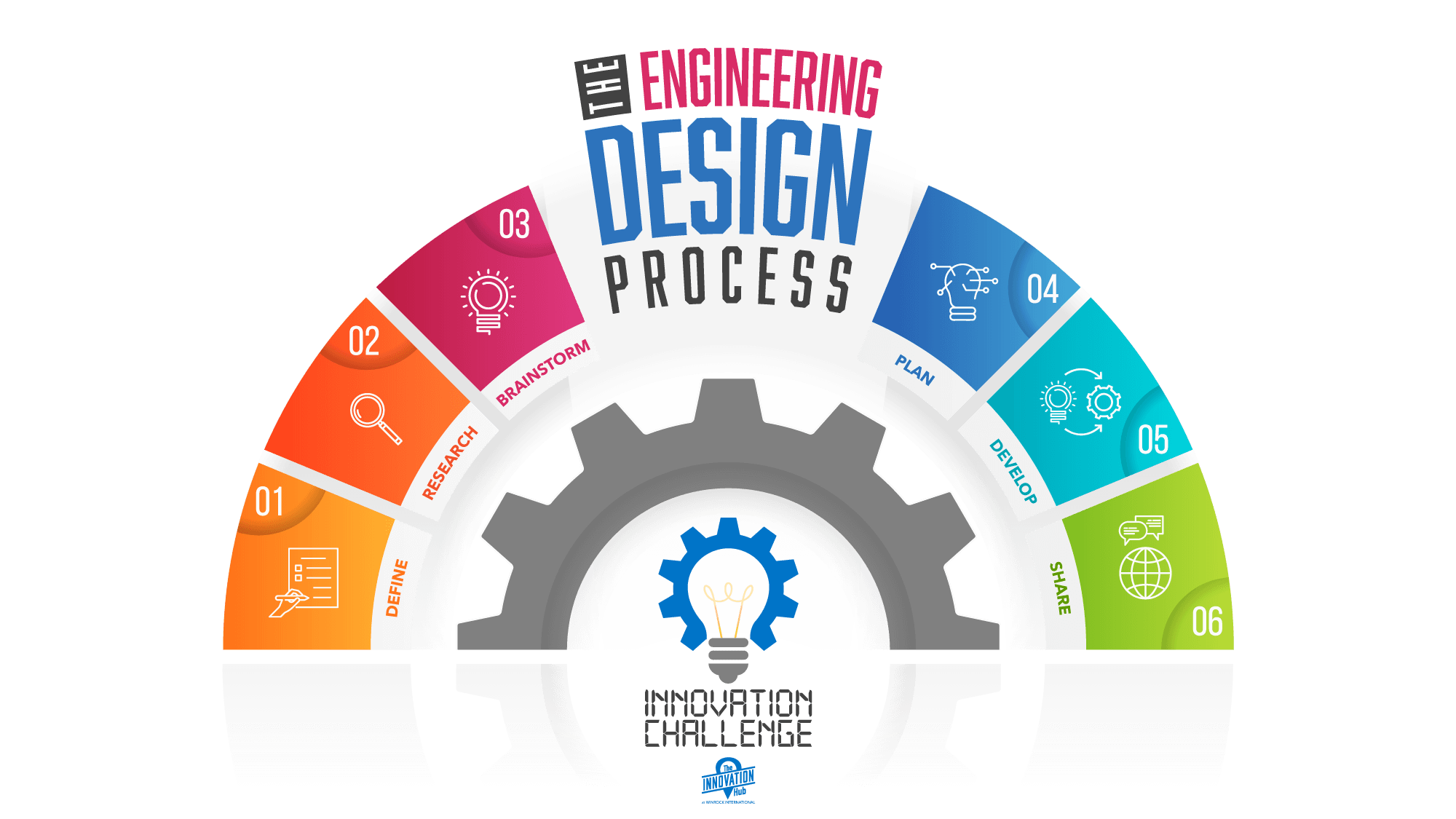
Learn how to solve the world's problems like an engineer!
Click the title to watch our videos!
- Define the Problem: Look around and think about problems you see and experience in your everyday life. Select and define the problem you plan to solve in your digital logbook.
- Conduct Background Research: Find existing solutions and think of how yours will be different. Be sure to paste titles and links of the resources you find into your logbook.
- Brainstorm & Evaluate: Brainstorm possible solutions and choose one to try. Begin planning what skills and materials you will need to create a prototype. Write it all down in your digital logbook.
- Plan & Gather Resources: Select a solution and list your project needs. Gather up resources.
- Develop and Test: Create a model of your solution. Test and evaluate your prototype. Use your logbook to write your findings. Does your project meet the requirements you specified? Refine and repeat as needed.
- Share Your Results: Create a short (1-4 minute) video to communicate the results of your project and share them. Your video should include your problem and how you chose it, what solution you came up with to solve it and if it worked, and then show us your prototype. The quality of your video will not count against you and needs no editing, however, it is important that you plan what you will say and speak loud and clear so that judges can understand what you did. It’s also important to show off how your prototype works, so be sure to have it on hand when you film to either demonstrate or explain how it works.
Frequently Asked Questions
Can projects be created by a team? If so, how many to a team?
Yes. Individuals or teams of up to 4 can participate.
How do I submit my project?
Students have 2 options for submission this year: The logbook and video can be submitted within the classroom or students can submit using a form, located at the end of their logbook or at the top of this page. Facilitators will receive instructions for joining Google Classroom after registration.
What should my project include?
How can I get help with my project?
Do participants who do not win receive anything?
Yes. Our team at the Innovation Hub would love to provide personalized feedback to students looking to improve their projects. Please reach out to us!
Learn new skills from Innovation Hub experts.
Dive into our virtual library below or ask your teacher to schedule a free consultation or training for your class!
TEACHERS: FIND OUT HOW TO REQUEST THESE SERVICES IN OUR TEACHER’S GUIDE.
Problem-Solving
Learn More
Learn how to solve a problem. Did you know there are ways to approach a problem in order to get a solution that works?
Design-Think-Build
Learn More
Learn the process of taking an idea and making it a reality using simple tools, found materials, and the power of your brain. Need to construct a solution of your great idea? Here’s how!
What is a Prototype?
Learn More
Meet the Innovation Hub’s Production Lead, Zoë Eagan-Gardner, who will explain what a prototype is and how our production team at the Hub helps inventions come to life every day!
Vector Design for Lasers
Learn More
Learn the art and power of vectors and what you can make with them! Vector designs use computers to make points, lines, and shapes which can be used to make logos, artwork, invention plans, and other awesome graphics.
Building your brand!
Learn More
Businesses and products use art and design concepts to appeal to both their customers and investors. Thinking about the look and feel of your business or product is what branding is all about. Learn new skills to set your products and ideas apart from the competition and grab your audience’s attention quickly.
3D Models with TinkerCAD
Learn More
Learn how to design 3D objects that show everyone what your idea looks like from all sides. This 3D model of your idea will help show others how it will work and help you measure real materials that you can use to build it. These 3D models could also be used to 3D print or use a machine to create a real version of your idea.
INSPIRATION CORNER
Watch how you can create a cardboard prototype of an idea.
Got an idea for an app or website? See how you can create a prototype using paper!
See how these kids’ ideas became actual prototypes for real possible products! How cool is that!
Check Out Our Previous Winners!
2022 Winners:
Workholding Device, Fountain Lake Charter High School
A.S.A.P, eSTEM Public Charter High School
OBI Recipe Finder, eSTEM Public Charter High School
Tiny Balloon Airplane, Homeschool
2021 Winners:
Savvy Kids Article
The Arkansas Regional Innovation Hub is a branch of the North Little Rock Public Library System.
FIND US IN NLR
Innovation Hub
North Little Rock Public Library System
204 E 4th St
North Little Rock, AR 72114
library.information@nlrlibrary.org
OUR HOURS
- MWF 9AM to 5PM
- TTH 9AM to 8PM
- SAT: 1st & 3rd of Month, 10AM to 2PM
